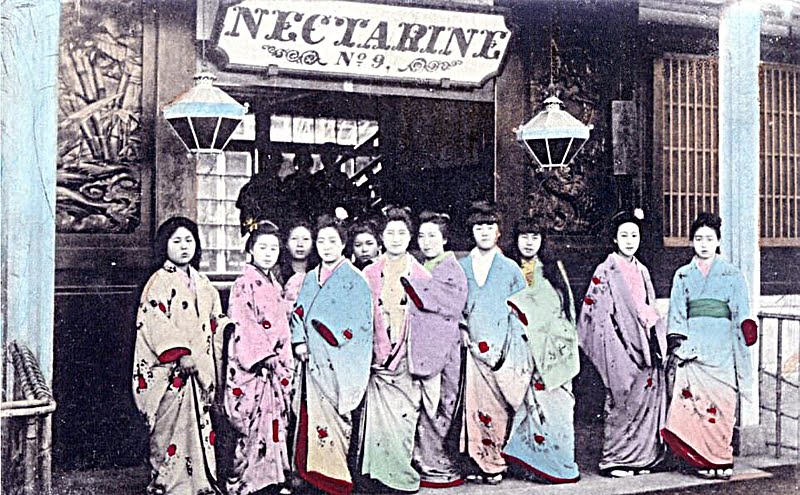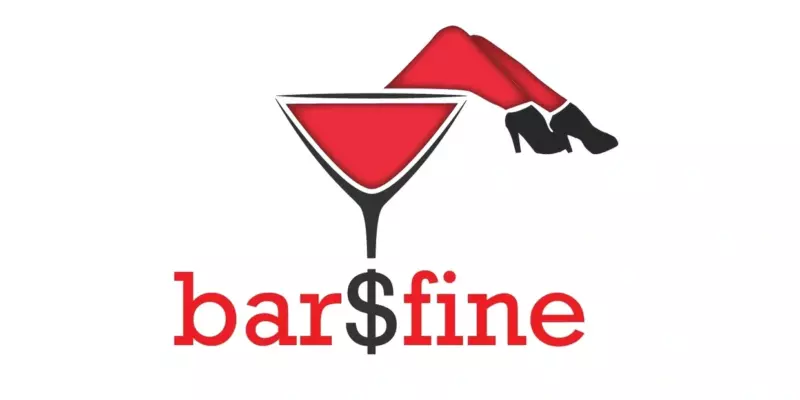Hey, all you gorgeous guys and girls! I wanted to write a detailed overview of what a bargirl is as it gets searched a lot on our website, however before we get stuck into the article, please note some, most or none of what is written may or may not apply to Kim’s Tavern Girl Bar or Vietnam Girlie Bars. (I will write a separate post on the differences in the near future.) Without further ado enjoy the article about What is a Bargirl? 🙂
Bargirls, the nocturnal butterflies of nightlife establishments, serve up more than just drinks. They’re dancers, hostesses, and sometimes, companions. But who are they really? Are they merely entertainers or something more?
This article delves into the multifaceted world of bargirls, exploring their roles, their income, and the blurred lines of their profession. It’s a glimpse into a complex existence shaped by economic realities, societal expectations, and pervasive stigmas.
The Role of Bargirls in Entertainment

Bargirls often play an integral part in the entertainment industry, providing various forms of amusement, from dancing to hosting, in bars worldwide. They’re the life of the party at a go go bar, dancing with an energy that can’t be matched. Their vibrant performances light up the stage, captivating the audience with their moves.
In a lady bar, a bar girl can switch roles from a dancer to a hostess seamlessly. They’re experts at making guests feel welcome, engaging them in light-hearted conversations and ensuring they’re well taken care of. Their charisma and charm are essential in creating a lively atmosphere, making every patron’s stay enjoyable.
However, a bargirl’s job isn’t just about entertainment. They’re also responsible for promoting the bar’s products. They’ve got to sell drinks, meet quotas, and keep customers coming back. It’s a demanding job, requiring a mix of performance skills and sales techniques.
But whether they’re dancing at a go go bar or hosting at a lady bar, bar girls are undoubtedly a vital cornerstone of the bar industry. Their unique role ensures that the nightlife scene remains vibrant and entertaining.
Methods of Payment for Bargirls

Despite working tirelessly, she’s often paid through a commission on drinks, and on occasion, she receives a portion of the bar fine. This is the reality for many bar girls, whether they’re working in a girls bar, a girly bar, or a girlie bar. Their income is usually derived from the sales of drinks to customers, with a small percentage added to the drink’s price serving as their commission. This commission-based system is a common practice in many girl bars worldwide.
In addition to the commission, some girls also receive a fraction of the bar fine, a payment made by a customer to allow a bar girl to leave her work early. The bar fine serves as a compensation for lost income and is typically retained by the bar. However, a portion may sometimes be given to the girl, providing her with an additional source of income.
However, their earnings mightn’t be as lucrative as it appears. These girls are often required to meet a quota of drinks to sell, and deductions can be made from their earnings if the bar provides them with food and accommodation. The life of a bar girl isn’t always as glamorous as it seems.
Bargirl Prostitution in Asia

In Asia, prostitution’s association with bar girls and teahouse girls has been a recurring theme in the 20th century’s popular culture. These women, often seen in jazz clubs or bars, provided companionship and sexual services to patrons, including US servicemen during post-war periods. The Vietnam War particularly saw a surge in bar girl activity, as military-endorsed prostitution was rampant, further entrenching their societal role.
In the Philippines, bar girls carry a stigmatized image, deeply tied to prostitution and history with the US military. They’re not just bar hostesses; frequently, they’re also involved in on-site prostitution or are hired out upon payment of a bar fine. This fine is a fee paid by the customer to the bar, allowing the girl to leave work early and accompany him. While the bar typically keeps these fines as compensation for lost sales, sometimes a portion is given to the bar girl.
The bar fine system is a common practice in venues offering prostitution across Southeast Asia, adding another layer to the complex dynamics of the bar girl culture.
Understanding Bar Fines

Someone’s gotta understand that bar fines aren’t just about the money; they also reflect a complex aspect of the bar girl culture. They’re essentially ‘release fees’, a payment made by a customer to the bar so a girl can leave her work early and accompany the customer outside. It’s not simply an exchange of cash for company, it’s a nuanced system that ties into the economics of the bar and the girl’s livelihood.
Sure, a part of the bar fine compensates the bar for potential lost income, but it’s not always kept in full by the establishment. Often, a portion goes to the girl, usually around half. It’s not a windfall, but it’s a significant part of her income, especially if the bar provides food and accommodation.
Bar fines are common in places offering prostitution, especially in Southeast Asia. Some larger chains even use part of the fine to fund STD and HIV testing for the girls. It’s a system that’s deeply embedded in the culture, and it’s not as black and white as it might first appear.
Challenges Faced by Bargirls in the Industry

There’s a multitude of challenges faced by bargirls in the industry, including health risks, social stigmatization, and exploitation. With frequent exposure to alcohol and smoking, they’re prone to numerous health issues. Some contract sexually transmitted diseases due to insufficient protection during sexual encounters, while others face physical harm from unruly customers.
Social stigmatization is another hurdle. Society often views them through the lens of morality, deeming their work as indecent. They’re marked as outcasts and are frequently subjected to derogatory comments and judgement. This social stigma further isolates them, making it even harder to find alternative employment.
Exploitation also runs rampant in the industry. Bargirls are often underpaid, overworked, and denied basic employee rights. They’re coerced into selling more drinks and providing sexual services to meet quotas or earn higher commissions. Some are forced into the industry due to economic necessity and lack of other viable options.
Cultural Perceptions and Stigma Surrounding Bargirls

Despite their role as service providers, bargirls often grapple with negative cultural perceptions and stigma associated with their profession. They’re seen as symbols of moral decay, often maligned by society. This stigma intensifies in parts of Asia, where the profession’s entanglement with the sex trade fuels the public’s disdain.
In postwar Japan and during the Vietnam War, bargirls’ association with prostitution and US servicemen led to their marginalization. Similarly, in the Philippines, they’re viewed through a lens of disapproval due to their link with the US military and the sex industry.
Yet, it’s not all one-sided. Some look at bargirls as figures of liberation, defying societal norms and embracing an unconventional path. They’re seen as independent women who take control of their lives and their sexuality.
However, these positive perspectives are often drowned out by louder voices of condemnation. This, coupled with the challenging working conditions, makes the bargirl profession a heavily stigmatized one. It’s a complex issue, entwined with societal norms, moral judgments and the harsh realities of survival.
While strides have been made to improve their conditions, the battle against cultural stigma remains a daunting one.
The Impact of Bargirls on Local Economies

Many local economies, particularly in Southeast Asia, rely heavily on the income generated by bargirls through their work in bars and clubs. These women are more than entertainers; they’re a significant economic force. It’s not just about the money they earn, but also the revenue they bring into the establishments where they work. They attract clientele who spend on drinks, often at marked-up prices, creating a significant profit margin for the bar owners.
Moreover, bargirls contribute to the local economy indirectly. They’re consumers, spending their earnings on goods and services within the community. They also remit a portion of their income to families in rural areas, which helps to stimulate economic activity in these less-developed regions.
However, there’s a flip side to this economic contribution. The profession often comes with a stigma, and the association of bars with sex work can lead to legal and social issues. While the economic impact of bargirls can’t be denied, it’s essential to consider these aspects when discussing their role in local economies.
Conclusion
In conclusion, it’s striking that in Thailand, an estimated 200,000 bargirls contribute to a nightlife industry worth $6.4 billion annually. Yet, they face harsh societal judgment and precarious working conditions.
The complexity of the bargirl’s world highlights the broader issues of economic inequality, societal pressure, and stigmatization. It’s a sobering reminder that behind the bright lights of nightlife, often lie stories of struggle and survival.



